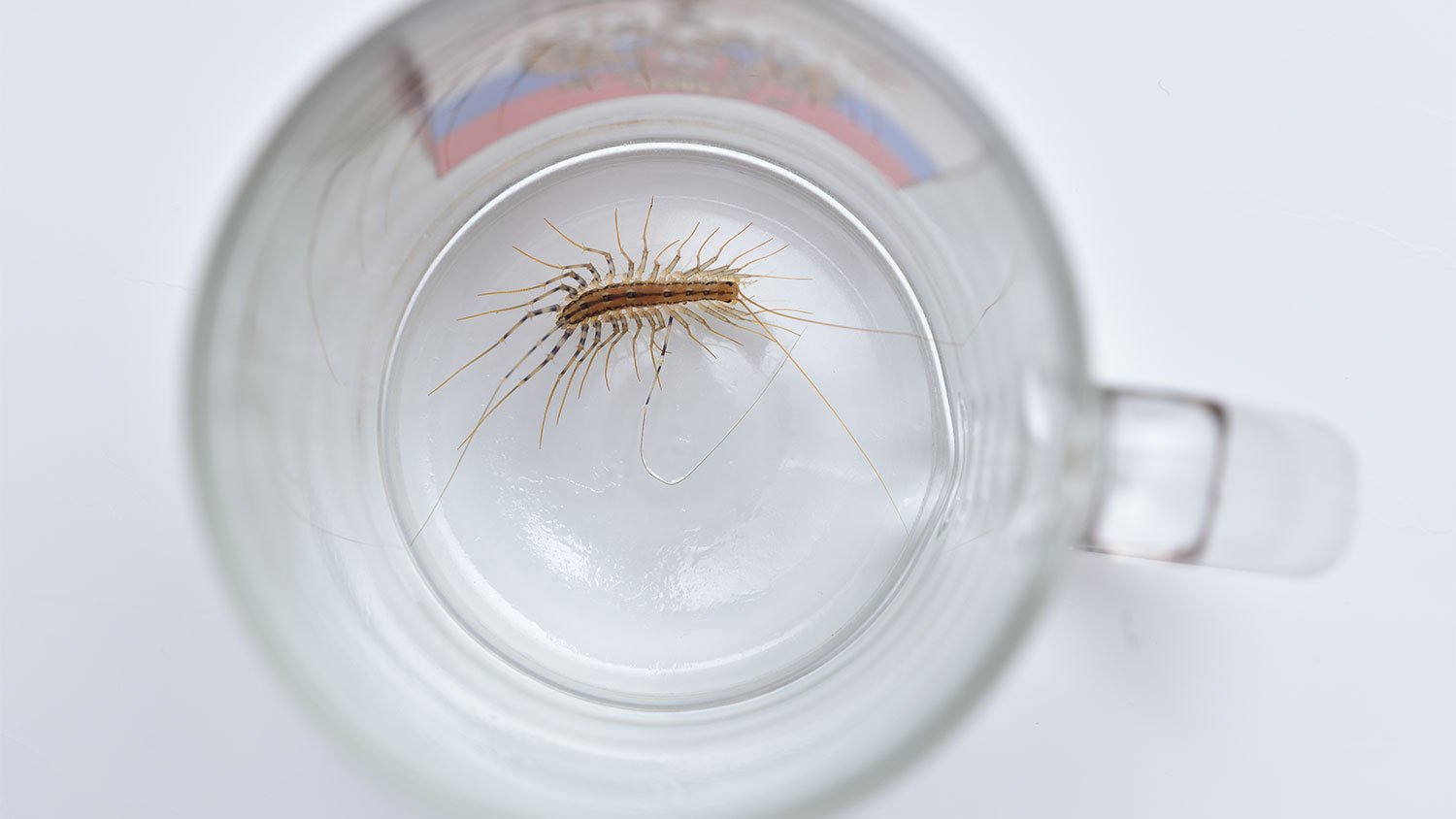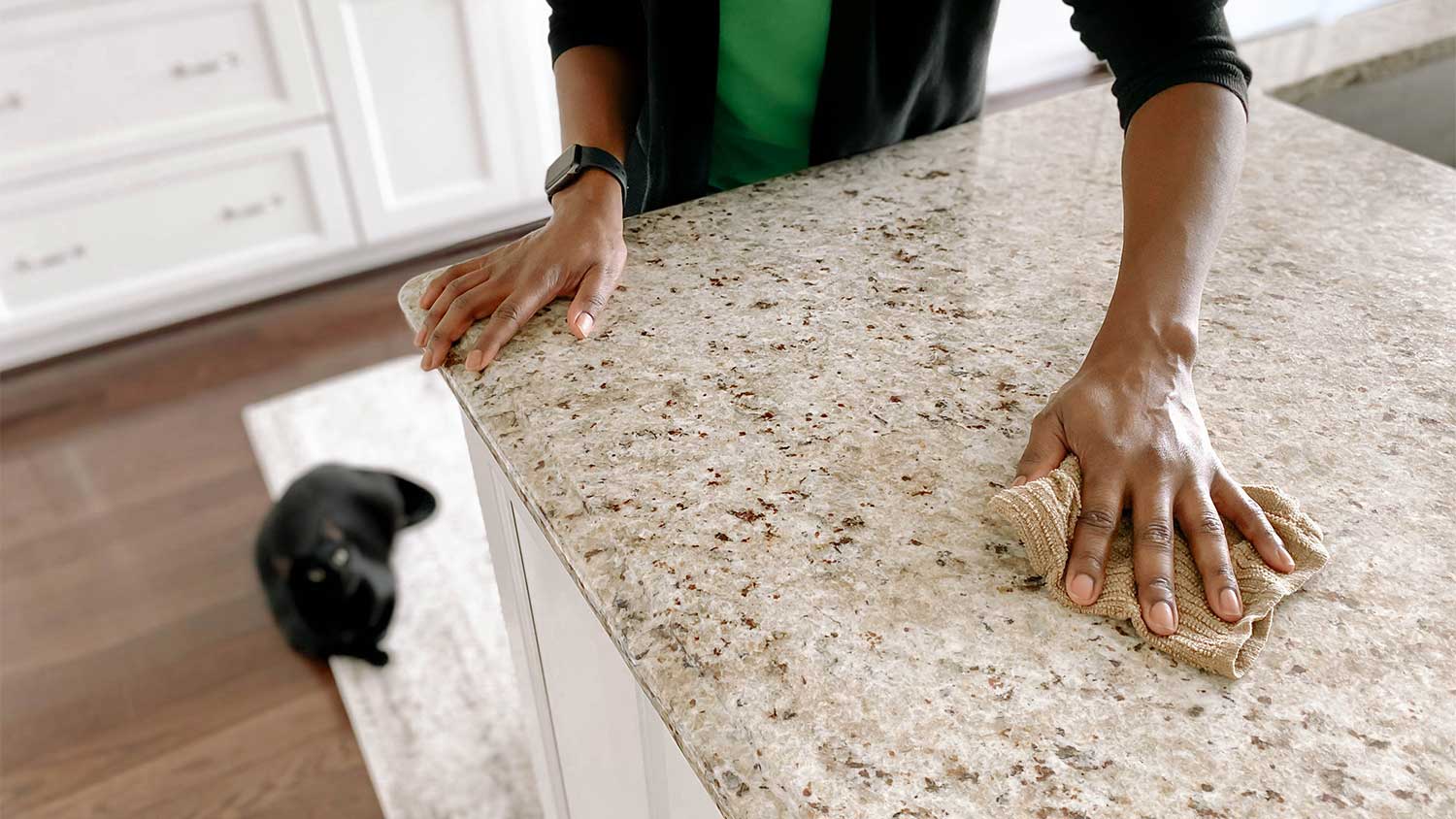How to Get Rid of Centipedes: Get a Leg Up on These Many-Legged Creatures
Impede the centipedes around your home


You know what they say about creepy-crawlies: More legs, more problems. And, aside from its distant relative, the millipede, the centipede takes the cake in that department. If you want to know how to rid this many-legged creature from your home, you’re not alone.
But while their exterior can be cringe-inducing, centipedes are generally harmless and often misunderstood. Whether or not you can sympathize, you probably aren’t a fan of the creatures stirring about your house. Here’s a little more detail on how to get rid of them (and why you might want to peacefully coexist).
What Is a Centipede?
Although they’re equally matched in (and arguably winning) the “creepy” contest, centipedes technically aren’t insects, but arthropods. They’re venomous but rarely cause harm to humans.
They’re also carnivores that feast on a variety of insects and other creepy critters, including:
Ants
Spiders
Moths
Cockroaches
Bed bugs
Silverfish
Crickets
Other centipedes
What Does a Centipede Look Like?

Although their name literally means “100 legs,” this isn’t a constant trait of the centipede. Each segment of their body contains one pair of legs (typically 15 pairs in total), which can roughly add up to 100 or more (or far fewer). These legs are usually quite long, protruding from their flat bodies and propelling them forward at freakish speeds.
Most centipedes, including the common house centipede, are orange or yellowish brown to dark brown in color and typically between 1 and 3 inches long. They have one pair of long, sensitive antennae and venomous jaws that they use to poison their victims. While they rarely bite humans, they can inflict a painful sting if provoked.
In fact, the National Capital Poison Center says centipedes are usually less dangerous than using bug spray.
How to Get Rid of Centipedes in Your House

If you’ve spotted the occasional centipede in your home, here’s some good news: They don’t nest in homes. Instead, they prefer to stay in active hunting mode, searching for annoying and/or terrifying insects to feed on, like roaches and bedbugs.
Centipedes are also bashful creatures that avoid confrontation with humans, so if you choose to leave them be, you likely won’t cross paths very often. Either way, here are the best ways to keep them out.
Use the Catch-and-Release Method
While poison sprays and swift squashes can be tempting, centipedes are beneficial insects—as such, trapping them and safely releasing them is the way to go. Centipedes are quick but mild-tempered and won’t try to attack unless you roughly handle them with your hands.
Best of all, you’ll have an outdoor ally that will continue to munch on insects, even if you can’t bear to share quarters with it.
Here’s an easy contact-free way to catch and release them back to the wild:
Place a cup or glass over the centipede.
Slide a magazine or a stiff piece of cardboard underneath.
Carry it outside and set it on the ground.
Lift the glass and allow the centipede to scurry away.
Make Your Home Less Inviting
Centipedes need moisture to survive, along with a healthy selection of insects to eat. Dealing with moisture problems in your home will make it uninhabitable, while sealing off entry points will keep out centipedes and other pests.
Here are the best ways to make your home unappealing to centipedes:
Use a dehumidifier to address moisture problems.
Inspect and repair any broken door or window seals.
Use caulk or expanding foam to seal off any cracks and crevices.
Remove any firewood, organic debris, and leaf litter near your home.
Opt for Traps and Poisons
If the catch-and-release method isn’t something you can get behind, you can seek more drastic measures.
Bug sprays with these ingredients will kill centipedes:
Cyfluthrin
Cypermethrin
Deltamethrin
Permethrin
Lambda-cyhalothrin
Tralomethrin
Take safety precautions when using bug spray—especially with kids and pets in the area. Open your windows and follow the manufacturer’s instructions. If you don’t want to go the poison route, sticky traps are another way to capture centipedes and remove them from your home. These have the added benefit of catching the other creepy-crawlies in your home, too.
Preventing Centipedes in Your House

If you want to get rid of centipedes for good, it’s crucial to address the one and only thing that invites them in the first place: food (aka any other creepy-crawly pests in your home). By keeping bugs out of your home, you’re making your place way less tempting, and they will most likely head out soon enough. As a bonus, you’ll also send spiders packing as well.
These are the best ways to reduce the bugs and spiders around your home:
Maintain a clean home (Pro tip: Use a daily, weekly, and monthly house cleaning checklist to help you stay on track).
Clean up food spills ASAP.
Keep all food in sealed containers.
Examine the perimeter of your home for cracks, gaps, and other potential entry points.
Consider using pest-deterring essential oils around your home (some can be dangerous to pets, so be sure to fully research what you use).
DIY vs. Hire a Pro
Despite the best DIY efforts, sometimes it’s time to call a local exterminator for help. Whether it’s ants, cockroaches, spiders, or other pests that have created a buffet for centipedes, a local exterminator is your go-to lifeline for eliminating them.
FAQs
What kills centipedes instantly?
While there’s no need to kill centipedes, if you’re squeamish by the sight, an insecticide spray will kill them on contact (read the label first to ensure it will be effective on centipedes).
When using poison, always keep it away from children and pets and follow all of the manufacturer’s guidelines. Boric acid is a low-toxicity alternative, but it should still get placed where children and pets can’t access it.
Why do I suddenly have centipedes in my house?
A sudden onset of centipedes could point to moisture issues in your home. Take measures to reduce your home’s humidity and call in a local plumber to fix leaks ASAP.





- Pest Control Services
- Ant Exterminators
- Mosquito Control Companies
- Rodent Control
- Termite Control
- Bee Removal
- Animal Control
- Bed Bug Control
- Pest Inspection
- Flea Control
- Raccoon Control
- Skunk Control
- Spider Control
- Cockroach Control
- Bird Control
- Bat Control
- Opossum Control
- Snake Control
- Groundhog Removal
- 24 Hour Pest Control Services
- Bug Control
- Fumigation Companies
- Termite Tenting
- Lawn Pest Control Services
- 7 Pests Most Likely to Invade Your Home, and How to Get Rid of Them
- 10 Common House and Yard Insects (and How to Identify Them)
- Which Home Projects To Put On Your To-Do List First After Moving
- How to Get Rid of Water Bugs (and Keep Them Away) in 4 Steps
- 5 Painless Pest Control Tips for Spring
- 14 Home Renovation Tips for a Stress-Free Project
- How to Build a House: Your Complete Guide to the Home-Building Process
- DIY Pest Control: The Best Methods to Try (and When to Call a Pro)
- Plants That Attract Beneficial Pests, From Honeybees to Ladybugs
- When to Call an Exterminator for These 9 Pests (and Skip the DIY)










